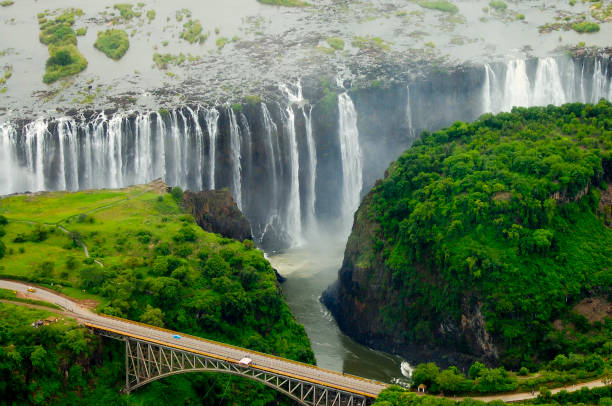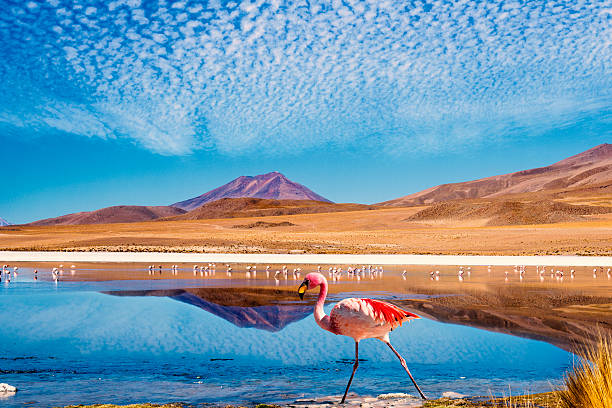The world is full of breath taking landscapes that showcase nature’s stunning beauty. From towering mountains to crystal-clear seas, these places captivate the imagination and leave lasting impressions on all who visit. Below are some of the most beautiful natural places in the world, each unique in its charm and allure.
1. The Grand Canyon, USA

One of the most iconic natural wonders, the Grand Canyon in Arizona, USA, is a vast and majestic landscape. Carved by the Colorado River over millions of years, the canyon stretches over 277 miles long and is up to 18 miles wide and a mile deep. Its multicolored rock layers tell the geological history of Earth, with some rocks dating back 2 billion years. Visitors can experience the beauty from several viewpoints, but hiking into the canyon, rafting down the river, or taking a helicopter ride offers a more immersive experience. The canyon’s scale, combined with the breath taking sunrises and sunsets that cast golden hues over the cliffs, make it a must-see destination.
2. Banff National Park, Canada

Nestled in the Canadian Rockies, Banff National Park is renowned for its dramatic landscapes of towering mountains, pristine lakes, and dense forests. One of its most famous spots, Lake Louise, is a glacier-fed lake that dazzles with its turquoise waters, surrounded by snow-capped peaks. Visitors can hike the trails, canoe on the lakes, or even ski in the winter months. Wildlife like elk, bears, and wolves roam freely, making it a paradise for nature enthusiasts. With its untouched wilderness and serene beauty, Banff offers an unforgettable experience year-round.
3. Aurora Borealis (Northern Lights), Arctic Regions

The Aurora Borealis, or Northern Lights, is one of nature’s most magical phenomena. These colorful lights dance across the night sky in hues of green, pink, purple, and blue, creating an ethereal display. The lights are caused by the collision of solar particles with Earth’s atmosphere, best viewed in Arctic regions such as Norway, Iceland, Canada, and Finland. The Northern Lights are unpredictable, but those fortunate enough to witness them find it to be a life-changing experience. The contrast of the glowing lights against the dark, icy landscape creates a surreal and otherworldly spectacle.
4. Mount Everest, Nepal/China

Standing at 29,032 feet (8,849 meters), Mount Everest is the tallest mountain on Earth. Located in the Himalayas, on the border between Nepal and China, it draws mountaineers and adventurers from around the globe. For many, reaching its summit is the ultimate achievement, although the journey is perilous and demands exceptional physical endurance. The surrounding landscape of the Himalayas is equally stunning, with deep valleys, massive glaciers, and sacred monasteries dotting the region. Even if one does not attempt to climb, just viewing Everest from nearby towns or base camps is awe-inspiring, as it towers majestically over the surrounding peaks.
5. Victoria Falls, Zambia/Zimbabwe

Situated on the Zambezi River, which separates Zimbabwe and Zambia, Victoria Falls is one of the world’s most impressive waterfalls. Known locally as “Mosi-oa-Tunya,” or “The Smoke that Thunders,” the falls drop over 354 feet into a narrow gorge, creating a roaring cascade of water. During the rainy season, the falls create a massive plume of mist that can be seen from miles away, while the sound of the crashing water is deafening. Visitors can take in the view from various vantage points, including a thrilling walk across the Knife-Edge Bridge, or by bungee jumping from the Victoria Falls Bridge for a more adventurous experience.
6. Great Barrier Reef, Australia

The Great Barrier Reef, located off the coast of Queensland, Australia, is the largest coral reef system in the world, spanning over 1,400 miles. It is home to a staggering diversity of marine life, including over 1,500 species of fish, 400 types of coral, and numerous species of sharks, rays, and sea turtles. The vibrant underwater ecosystem is a paradise for scuba divers and snorkelers, who can explore the reef’s colorful coral gardens and encounter sea creatures in their natural habitat. Despite threats from climate change, the reef remains one of the most beautiful and biologically rich places on Earth.
7. Salar de Uyuni, Bolivia

Salar de Uyuni is the world’s largest salt flat, covering over 10,000 square kilometers in southwestern Bolivia. This vast, flat expanse of white salt creates an otherworldly landscape, especially after a rain when it transforms into a giant mirror reflecting the sky. The seemingly endless horizon and perfect reflections create an illusion of walking in the sky. Visitors can explore the salt flats by jeep, staying in unique salt hotels or visiting nearby volcanic islands dotted with giant cacti. At night, the clear skies offer some of the best stargazing opportunities in the world, adding to the surreal experience.
8. Santorini, Greece

While Santorini is known for its picturesque white-washed buildings and blue-domed churches, the island’s natural beauty is equally striking. Formed by a massive volcanic eruption thousands of years ago, the island’s cliffs rise dramatically from the Aegean Sea, offering stunning views of the caldera and surrounding islands. The sunsets in Santorini are legendary, with the sky turning shades of orange, pink, and purple as the sun dips below the horizon. Visitors can explore the island’s volcanic beaches, hike along the caldera’s edge, or take a boat tour to the active volcano nearby, where they can soak in hot springs.
9. Plitvice Lakes National Park, Croatia

Plitvice Lakes National Park is a series of cascading lakes and waterfalls set within lush forests in central Croatia. The park, a UNESCO site, boasts 16 lakes of changing colors due to minerals and sunlight angles. Wooden walkways lead visitors through the park, allowing them to get close to the waterfalls and lakes. The tranquil atmosphere, combined with the vibrant colors and sound of flowing water, makes Plitvice Lakes a serene escape into nature.
Conclusion
These most beautiful natural places in the world each offer their own unique and captivating beauty, showcasing the incredible diversity of our planet. Whether it’s the majestic grandeur of mountains and waterfalls or the serene, mirror-like reflections of salt flats and lakes, these most beautiful natural places in the world remind us of the immense power and beauty of nature. Visiting any of these destinations will leave an indelible mark, a memory of the awe-inspiring beauty that exists in the world around us.
Read More: Beautiful Beaches in the World: A Journey to Paradise
FAQ: Most Beautiful Natural Places in the World
1. What is the best time to visit the Grand Canyon?
Fall (September to November) or spring (March to May) are the ideal seasons to explore the Grand Canyon. In contrast to the busiest summer months, the weather is pleasant and there are less visitors.
2. Is Banff National Park accessible year-round?
Yes, Banff National Park is accessible throughout the year. Each season offers unique experiences. Summer is ideal for hiking and lake activities, while winter is perfect for skiing and snowboarding.
3. Where can I see the Northern Lights the best?
The best places to witness the Northern Lights include northern regions such as Norway, Iceland, Finland, and Canada. The optimal viewing period is between September and March.
4. Can anyone climb Mount Everest?
Climbing Mount Everest requires extensive preparation, training, and experience in high-altitude climbing. It is not recommended for beginners due to the physical challenges and risks involved. Most climbers train for years before attempting the summit.
5. Is Victoria Falls the largest waterfall in the world?
Victoria Falls is not the tallest or widest waterfall, but it is considered the largest when combining its height (354 feet) and width (5,604 feet), creating the world’s largest sheet of falling water.

